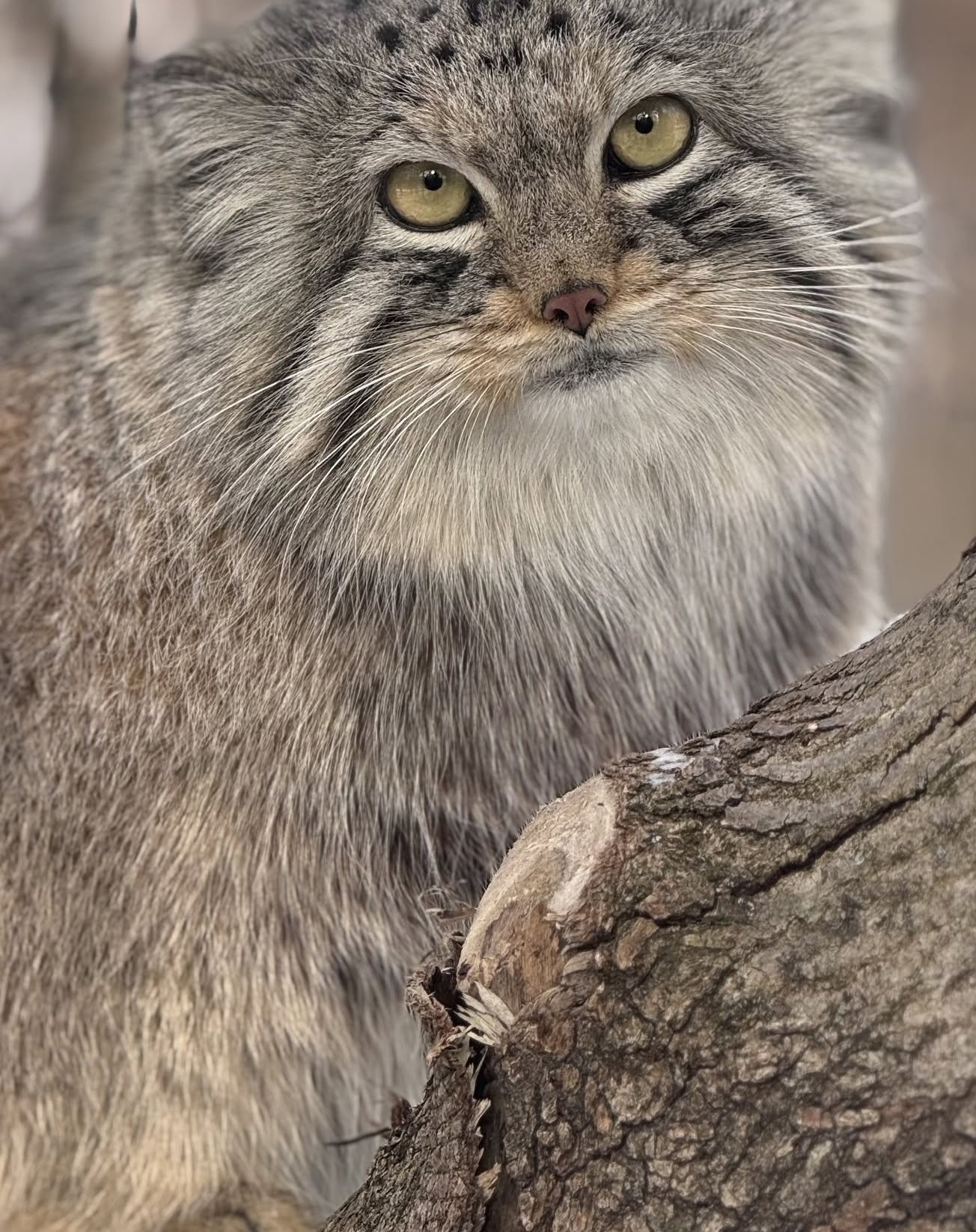- Introduction to Brie, the female Pallas’s cat, and her new home at the Good Zoo.
- Habitat and characteristics of Pallas’s cats in the Asian mountain steppe.
- Importance of the Species Survival Plan (SSP) in preserving endangered species such as Pallas’s cats.
- Challenges faced by Pallas’s cats, including habitat fragmentation and poaching.
- Role of zoos and wildlife conservation efforts in ensuring the survival of Pallas’s cats.
Brie, the female Pallas’s cat at the Good Zoo, has become a fascinating point of discussion under this week’s Fun Fact Friday. Brie’s journey to her current home started at the Dakota Zoo in Bismarck, North Dakota. As a resident of an enclosure that mirrors its natural Asian mountain steppe habitat, Brie represents her vibrant wild relatives, who spread across parts of Asia, from Iran to Russia. A significant population of these cats resides in Mongolia, a region marked by its vast stretches of mountain plateaus.
The Pallas’s cat, known scientifically as Otocolobus manul, boasts unique adaptations that facilitate its survival in the harsh climates of its natural habitat. Its dense, plush fur is double-layered, providing the needed insulation against the cold. This small wild cat is recognizable by its stocky build, round face, and distinctive flat ears set low on its head, which aids in blending in with the rocky terrain to avoid predators. Despite its stout appearance, the Pallas’s cat is fully equipped to navigate across rocky ledges and crevices, which form its hunting ground for prey such as small rodents, birds, and insects.
Zoos play a crucial role in the continuation of species such as the Pallas’s cat, particularly as they are listed as Near Threatened on the IUCN Red List. One of the primary strategies employed by zoos is the Species Survival Plan (SSP), which has recommended the introduction of Brie to Dean, another Pallas’s cat at the Good Zoo. The SSP aims to manage the breeding of endangered species to maintain healthy, genetically diverse populations across accredited zoos and conservation facilities. Such programs are essential for ensuring a sustainable future for these species, compensating for the declining availability of safe and undisturbed habitats in the wild.
The challenges that Pallas’s cats encounter extend beyond natural threats. Human activities, leading to habitat fragmentation, pose a significant risk to their survival. The expansion of agriculture, mining, and industrial developments disrupt their habitats, creating isolated subpopulations with limited genetic exchange. Additionally, hunting for their thick fur continues to threaten these cats, despite protective legislative measures. Conservation organizations, alongside zoo initiatives, work tirelessly to combat these challenges by raising awareness, promoting legislation, and conducting research to enhance habitat protection.
In this network of conservation efforts, zoos serve as vital education and research hubs that promote the importance of preserving biodiversity. They provide opportunities for scientific studies on species like Pallas’s cats, which is critical for an in-depth understanding of their behavioral patterns, genetics, and health requirements. This knowledge not only benefits captive breeding programs but also aids in-field strategies to mitigate threats in native habitats.
Furthermore, by housing species such as Brie and involving the public through educational programs, zoos foster a deeper appreciation and understanding of wildlife conservation. Encouraging empathy and proactive involvement from the community can drive positive change, influencing conservation outcomes on a broader scale. As such, the introduction of Brie to visitors during the zoo’s Fun Fact Friday serves as an engaging educational tool, highlighting the significance of conservation efforts while sharing the fascinating features of the Pallas’s cat.
In the grand scheme of wildlife conservation, every effort, from community education to international collaboration, contributes to preserving species diversity. While Brie’s story may seem like a small chapter in the vast narrative of environmental stewardship, each initiative builds towards a more sustainable future for countless species teetering on the brink of extinction. As our understanding of ecosystems deepens, so does our responsibility to protect and preserve the invaluable life that shares our planet. Through continued dedication and adaptation of conservation strategies, we can hope for a thriving coexistence where species like the Pallas’s cat endure for generations to come.
*****
Source Description
🐾‼️Our Fun Fact Friday this week is to introduce one of the new residents at the Good Zoo, the female Pallas’s cat, Brie! Brie came to us from the Dakota Zoo in Bismarck, North Dakota. Pallas’s cats are a species of cat found in the mountain steppe habitat of Asia, from Iran to Russia, with a large population in Mongolia. Pallas’s cats rely on thick fur to keep them warm, even sometimes sitting on their tails to act as a barrier from the snow.
Dean and Brie are recommended to be introduced to each other by the Species Survival Plan (SSP). Pallas’s cats populations are declining due to habitat fragmentation and hunting for their fur.


